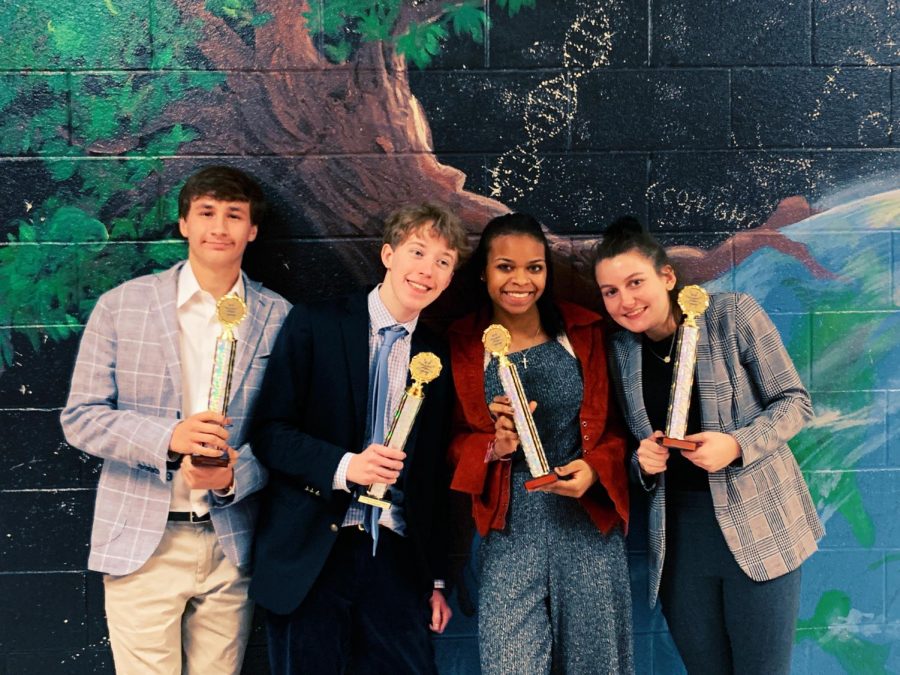“Debate and Tackle: Your favorite non-athletic sport”
The speech and debate team doesn’t play in a gym or on a field, but they’re one of the most competitive teams in school
Photo courtesy of Witt Hollensbe
Seniors Austin Lalomia and Witt Hollensbe show off their finalist trophies with two competitors from Walton High School at a competition last year.
November 13, 2019
People have been perfecting the art of competitive talking for centuries. Historically, they’ve deliberated on the pressing issues of their time: What is consciousness? Is there a god? What does it mean to be human? Does the phone go in the left or the right pocket?
Today, the speech and debate team continues this academic tradition.
The team participates in a debate format called Public Forum, in which two teams of three debaters spar over a given subject. The subject is usually fairly specific, like tariffs imposed on Mexican imports or American involvement in NATO, and they generally never stray into explicitly philosophical territory.
Each team is given a resolution to defend two months before the debate takes place. They have to research their assigned viewpoint and create a cogent argument when they face the other team.
During the actual debate, the first speaker for each side presents an abstract of their argument. What follows is a series of responses made by each team to their opponent’s position, with crossfires in between.
The debate has a “back and forth” and generally flows “like a tennis match,” according to senior Witt Hollensbe, who has debated since freshman year.
The debates have one judge mediating for the first few rounds, then three or more for the following rounds. Debaters can spend hours preparing for their competition, but the judge ultimately determines the winner.
Having the outcome of a debate determined by one person seems like it could compromise its integrity, but the competitors think it adds depth to the strategy. The point of a debate “is to change someone’s opinion [anyway],” Hollensbe said.
Senior debate team member Joey Tarnowski thinks that having a judge be the arbiter of a debate is likely the best solution, since “there is no objective way to determine who won a debate.”
Competitors even consider their judge’s inclinations for their debate strategy. Newer judges tend to be more easily swayed by rhetoric and pathos while seasoned ones are generally more focused on technique.
Senior debater Austin Lalomia, for example, said that he makes arguments more holistically as opposed to using specific, technical language or exposing logical fallacies, a sentiment echoed by Tarnowski. Hollensbe said that he even watches the judge’s face for changes in expression when he makes a point.
Hollensbe said he was drawn to the speech and debate because he is “very political, extremely opinionated, loud, and rude.” Lalomia had a similar reason, saying that he enjoys debating because it provides a space to “talk about political issues safely” and that “the competitive aspect of debate makes it easier to digest and more engaging to participate in public discourse.”
The speech and debate team’s next competition is coming up in December, when they’ll have the chance to earn even more trophies and accolades. Perhaps the biggest accomplishment of the season was when Tarnowski was named an All-American by the National Speech and Debate Association, which is earned by under one percent of 141,000 debate participants.





